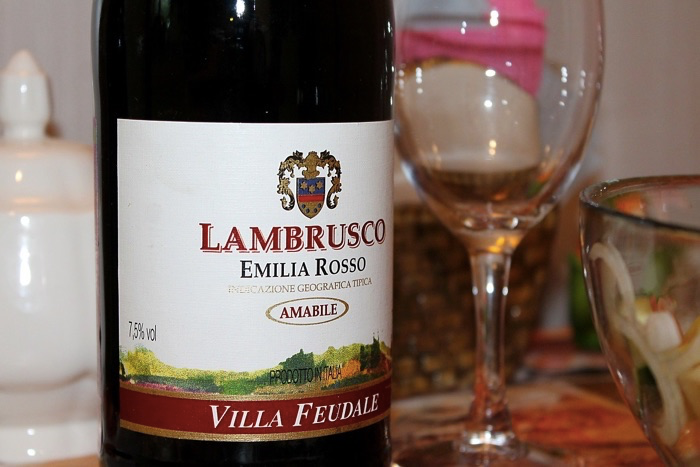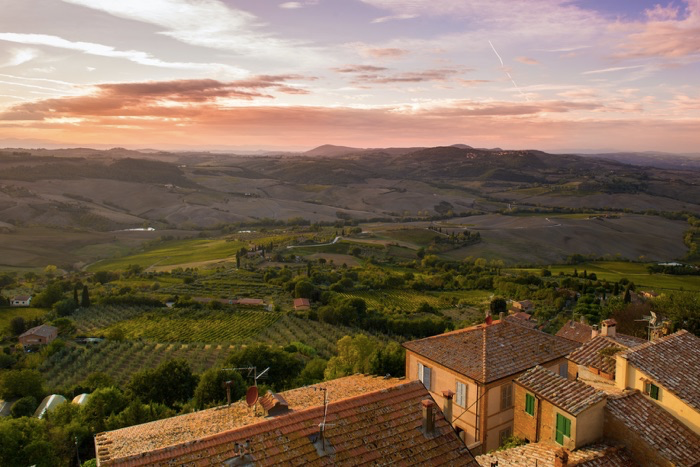What is Lambrusco Wine?
Discover the delightful, sparkling Italian red wine - Lambrusco! Learn about its unique flavour and characteristics, and how it can be enjoyed.

Lambrusco wine has been gaining popularity in recent years among both casual drinkers and connoisseurs. Despite its long history dating back to ancient Rome, many are still unfamiliar with this unique beverage.
But what exactly is Lambrusco wine, and what sets it apart from other types of wine?
What is Lambrusco Wine?
Lambrusco is a sparkling red wine originating from the Emilia-Romagna region in Italy. It is made from the Lambrusco grape variety, which is grown in four zones in Emilia-Romagna and one zone in Lombardy, primarily around the provinces of Modena, Parma, Reggio Emilia, and Mantua.
The use of the Lambrusco grape in winemaking has a long history, dating back to ancient times. It was highly regarded for its productivity and high yield during the Roman era. The word "Lambrusco" itself has become synonymous with a sparkling, fresh, and light wine, with lively pink foam and intense aromas reminiscent of red fruits.
Lambrusco wines come in white, rosé, and red varieties, with red, being the most well-known and adding distinct personality. They are versatile wines suitable for drinking from aperitif to dessert, and they can be categorized as dry, semi-dry (amabile), or sweet.
Lambrusco represents excellent value for money and is worth exploring due to its delicious and diverse range of styles and appellations.
Where Does Lambrusco Wine Come From? Origins and Evolution
Lambrusco has a rich history that dates back centuries. The wine comes from the Lambrusco grape variety that grows in the fertile soils of the Emilia-Romagna region. The origins of this grape date back to ancient times when it was first cultivated by Etruscans in northern Italy.

The wine became popular during the Roman era when it was used as a celebratory drink during religious events and festivals. During the Middle Ages, Lambrusco was produced mainly for local consumption and was considered a rustic beverage due to its low alcohol content.
However, as trade routes expanded during the Renaissance period, Lambrusco began to gain popularity outside of Italy.
In modern times, there has been a revival of interest in Lambrusco wine due to its versatility and unique flavour profile.
Flavour, Color, and Aroma of Lambrusco
The flavour of Lambrusco can vary depending on the specific type. Still, it typically ranges from sweet to dry with notes of strawberry, blackberry, raspberry, and cherry.
When it comes to colour, Lambrusco wines can range from deep ruby-red to bright pink hues. Some Lambruscos are even made as a rosé or blanc de noirs style which produces a lighter color.
The bubbles in this wine come from the unique fermentation process that creates natural carbonation making it an excellent choice for those who enjoy sparkling wines.
Types of Lambrusco: Varieties and Differences
This sparkling red wine comes in many different types and varieties, each with its own unique flavour profile. Understanding the differences between these variations can help you choose the perfect bottle for your next occasion.
| Lambrusco Grape Variety | Characteristics | Flavour Profile | Colour | Sweetness Level |
| Lambrusco di Sorbara | Light, delicate | Floral, vibrant acidity | Pale pink | Dry to off-dry |
| Lambrusco Grasparossa | Full-bodied, intense | Dark fruits, rich tannins | Deep red | Off-dry to sweet |
| Lambrusco Salamino | Moderate tannins, lively acidity | Red berries, plums, spices | Ruby red | Off-dry to sweet |
| Lambrusco Maestri | Adds depth and structure to blends | - | - | - |
| Lambrusco Marani | Enhances colour and texture in blends | - | - | - |
*Lambrusco Maestri is largely used as a blending grape and isn't typically known for any particular flavour, colour, or sweetness qualities. It is frequently included in blends to enhance the wine's overall structure, complexity, and ability to age. Because of this, it lacks unique qualities of its own in terms of flavour, colour, or sweetness.
*Lambrusco Marani is commonly used as a blending grape in the production of Lambrusco wines. It is primarily utilized to enhance the colour and texture of the final wine rather than providing distinct flavour profiles or sweetness levels. As a result, specific flavour characteristics, colour, and sweetness levels associated with Lambrusco Marani alone may not be well-defined.
Why Lambrusco is Making a Comeback
This type of wine was very popular in the 1970s and 1980s, but its reputation declined in the 1990s as poor-quality wines flooded the market. However, with improved winemaking techniques and an increased interest in unique, dark wines, Lambrusco has regained its rightful place on many wine lists.
One of the reasons for Lambrusco's resurgence is that it pairs well with a variety of foods, such as pizza, charcuterie boards and spicy dishes. The lightness of the bubbles helps to cleanse the palate between mouthfuls and at the same time complements rich, savoury flavours.
In addition, many people appreciate Lambrusco as an alternative to heavier red wines during the warmer months or when they are looking for something more informal.
Conclusion
In conclusion, Lambrusco wine is a unique and versatile Italian wine that has been enjoyed for centuries. It is characterised by its sparkling nature, bold flavour and bright acidity.
Whether you're looking to pair it with a meal or enjoy it on its own, Lambrusco should definitely be on your must-try list. So go ahead and try this fizzy red - you might just find your new favourite wine!